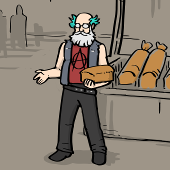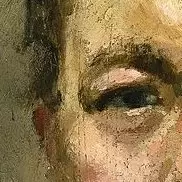George Grosz was a fascinating and viceral painter, deeply scarred and influenced by his experience serving in the first world war, before he was discharged and left with psychiatric problems and a serious drinking problem. Many of his paintings from that period deal explictly with the horrors of war and the human cost juxtaposed against societal conflict.
His later work saw him fined by the German government and some of his collections ordered destroyed as they became more satrical and focused upon what he saw as the hypocracy of those that advocate for such violence - things like preachers vomiting grenades and Jesus being forced into conscription.
He also went to Russia in the 1920s, where he was initially detained as a spy, but released when proven not to be and even met Lenin. He lived in the US for most of his life after the '30s but eventually returned to Berlin, where he died falling down the stairs one night drunk.


Very much so on Otto Dix. I believe they met after the war, either at an art class or gallery, but I can’t remember or immediately find a soruce for that.
There’s a lot of Ludwig Meidner influence too, especially the colourful lanscapes with multiple or contradictory vanishing points. He was an interesting guy too - his artwork was banned by the Nazis in the 30s, some of his work burned, and he fled before the holocaust started in earnest but his work from then and later is haunted by it.